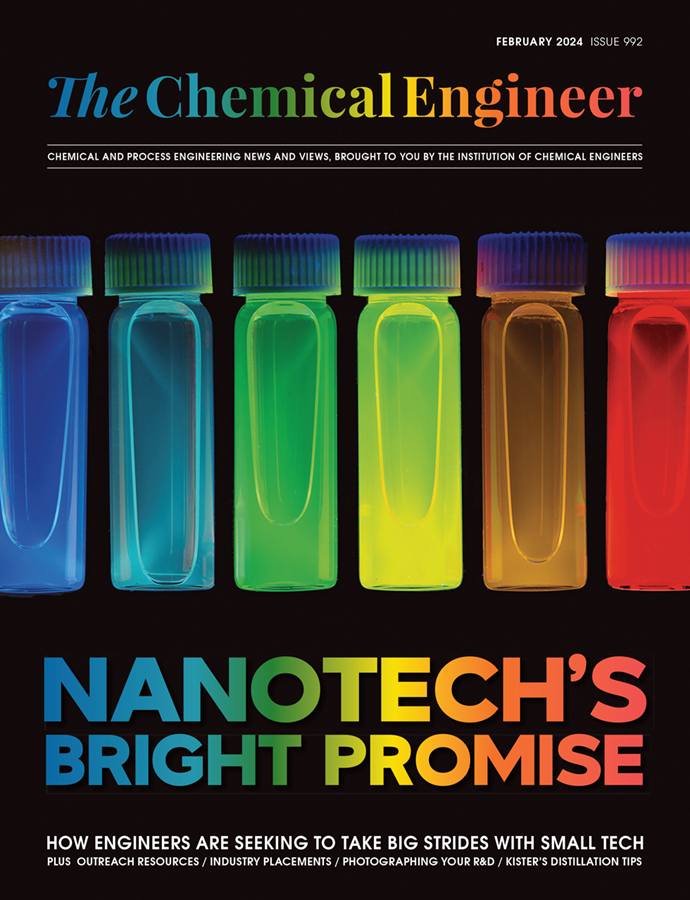Deadly Oxygen?

Durban, South Africa 1979
THINK of oxygen, and I'd suspect your first association would be entirely positive, no doubt related to its life-giving properties. But be aware, it can have a dangerous side to it too...
The first scientists to test pure oxygen used the time-honoured test method of any new chemical, which was to place mice or rats in pure oxygen. In 1899, J Lorain Smith noticed fatal pneumonia in rats after 4 days' exposure to 73% O2, hence the title of this story. Of course, O2 is deadly in other ways, especially by supporting burning – as evidenced by the recent bush fires in Australia.
In 1979, working as Factory Manager at Chrome Chemicals, near Durban, South Africa, I learned that oxygen played a big part in our process, which was based on the oxidation of chromite ore in the presence of sodium carbonate and air, to produce sodium chromate (SMC), by reaction at about 1,200°C, in a rotating kiln heated by burning fuel oil.
You could write the reaction equation as:
2FeO.Cr2O3 + 4Na2CO3 + 3.5O2 ---> 4Na2CrO4 + 4CO2 + Fe2O3
The chromium had to compete with other elements such as aluminium (which forms sodium aluminate) and vanadium (forming sodium vanadate) in the process. To improve our understanding of the process, I recruited a very good inorganic chemist who set up a small tube furnace with a silica tube and we organised a range of experiments, varying chromite particle size, temperature , O2 concentration and carbonate/chromite ratios versus time. I modelled this three-phase process and could calculate the expected yield of SMC for any range of chromite/carbonate and O2 concentrations at any roast temperature and chromite particle size.
After reaction in the kiln, the sodium chromate was dissolved in water, filtered off and treated in a number of ways to produce high-purity sodium dichromate, Na2Cr2O7.
My first 'run-in' with oxygen
My first “run-in” with O2 happened one morning, as I was doing my rounds. We had a set of compressors, connected via an oil catch-pot to the purification plant. A crowd of office workers and the operator were standing open-mouthed as the paint on the compressed air line to the factory was blistering and crackling! I shouted to the operator to switch off the compressor, but he was stood still, with his mouth open, staring at the pipeline. I ran into the control room and shut down the compressor. The fire in the pipe soon died down.
Trying to work out what had happened, I realised that, because the compressed air was at 6 bar pressure, the equivalent partial pressure of O2 in the line was above 1 bar, ie equivalent to pure O2. The original fire must have been caused by oil in the line, but it is possible that the steel in the pipe also caught fire. We ensured that the oil catch-pot was always emptied every day after that!
O2 generator fire on passenger planes
A couple of years ago, I gave a talk entitled Surviving the Chemical Industry; a safety talk for new engineering undergraduates in Chester. One of the topics I covered was the “Fire Triangle”, the necessary conditions for a fire being heat, oxygen and fuel, as below.

I pointed out to the students that in some cases, the fuel was supplied by the equipment containing the oxygen. For example, there had been a number of mysterious fires on board certain passenger planes. The investigators found that the fires had been caused by a faulty design of the O2 compressor on board, which resulted in the compressor itself becoming the fuel and burning up in the pure O2 it was compressing.
One of the investigators gave a dramatic demonstration on YouTube.
Oxygen enrichment trial
A few months after the compressor incident, a senior salesman from Afrox (part of the Linde Group) came to see me. They were installing a new air separation plant to cater for increased demand for liquid nitrogen for frozen food products. Unfortunately for them, they had no increase in sales of liquid oxygen, so they were trying to find markets for the extra O2 which would be produced.
They didn’t know that our process was an oxidation one, but they had obtained data showing that we were a very big consumer of fuel oil. The salesman explained that burning fuel oil in an O2-enriched atmosphere would save a lot of oil, since heating up the nitrogen in the hot air at 1,200°C needed a lot of heat. He pitched the O2 price at a level which would quickly pay for itself in oil savings. I was very interested, but I wanted them to do a trial first.
It was easy to set up a trial on our plant, since we had three identical kilns operating in parallel. We would be able to set one up with O2 enrichment, and compare its performance with the others relatively easily. Afrox arranged to supply a small liquid O2 tanker, and connected it with new connections to the inlet piping to one of the kilns. This work was done one Monday, and the following day I walked with the salesman to inspect the installation. While walking around, he talked about other installations he had been involved with. He started the conversation, which went something like this:

Under control
Once I had recovered from the shock, we repeated the risk assessment and made sure that the system was completely safe, and decided to carry out the trial on the following day.
The trial was a great success. Not only did it save the amount of fuel oil we had calculated, but the yield of sodium chromate had also substantially improved. This was not a complete surprise, since I had modelled the kinetics of the process, and the substantial increase in O2 concentration drove the reaction strongly to the right, as expected.
O2 may be deadly to some, but properly controlled it can be a powerful workhorse in the chemical industry.
To read more of Jimmy Hunter's Chemeng Chronicles, visit the series hub.
Recent Editions
Catch up on the latest news, views and jobs from The Chemical Engineer. Below are the four latest issues. View a wider selection of the archive from within the Magazine section of this site.




